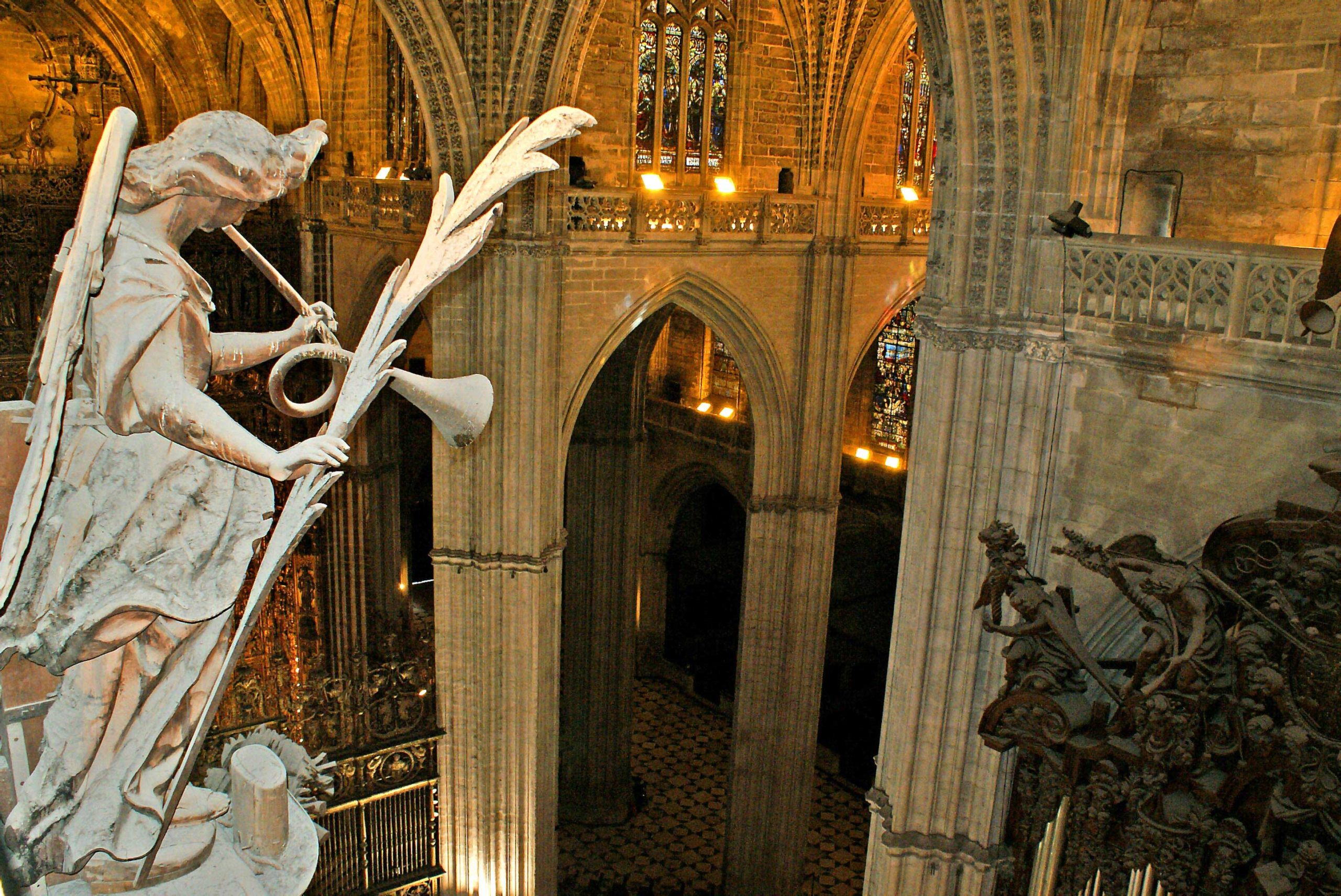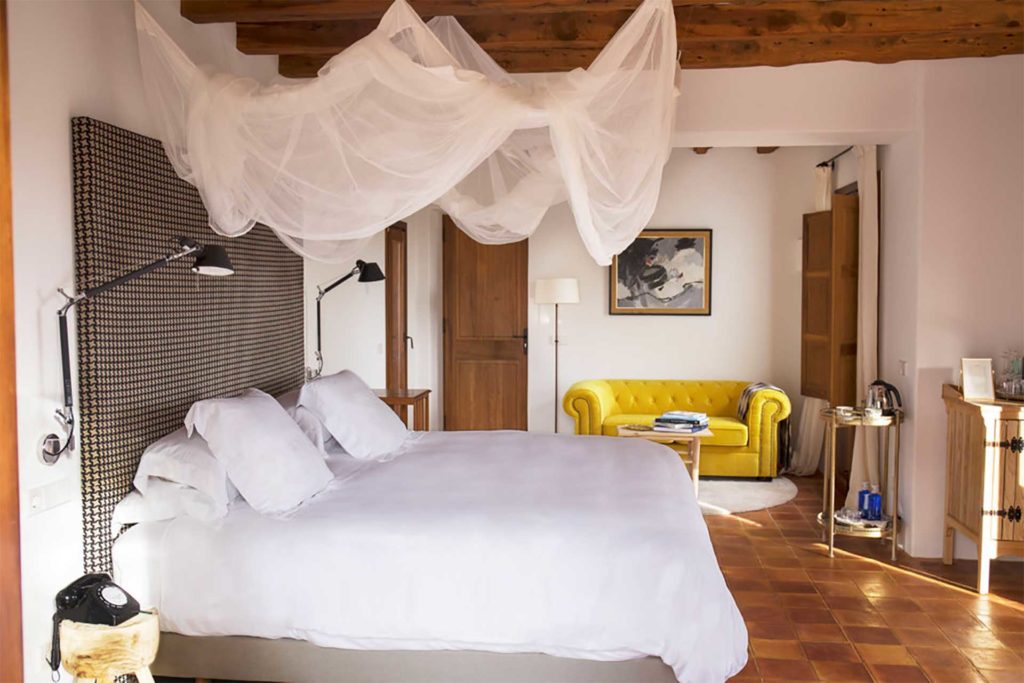The traditional way to visit Seville Cathedral is from ground level, allowing you to enjoy the extraordinary magnificence of this ancient basilica with its soaring ceilings, declared a UNESCO World Heritage Site in 1987 along with the Real Alcázar and the Archivo de Indias. However, you can also have a visit offering a very different perspective: from above, over the rooftops and along the upper galleries – an alternative point of view, and a great way to appreciate the impressive scale of what is the largest Gothic Cathedral in the world.
History of Seville Cathedral

But this sacred building hasn’t always been as we know it today. The construction of the Cathedral of Santa María de la Sede of Seville began in around 1401, although the exact date isn’t documented. We do, however, have evidence that the last stone was laid on 10 October 1506. In the 500 years since then, maintenance has been constantly carried out on this vast edifice. The latest major repair was the replacement of 576 supporting stone slabs in the walls, in 2008.
A building which was designed to be “so beautiful and so great that those who see it think that we are mad”
The Cathedral’s story begins in 1172, when the Almohad caliph Abu Yusuf Yaqub ordered the construction of a mosque on the current site, of which the Giralda tower was the minaret. Over the centuries, the building has adapted its appearance to the different cultures and religions which have held power in the city, successively enriched by a variety of styles, and resulting in the basilica we see today.
Almohad, Mudejar, Gothic, Renaissance, Baroque… every period is represented in the Cathedral. So a guided tour will provide visitors with a complete overview of a building which was designed to be “so beautiful and so great that those who see it think that we are mad”, as recorded in the minutes chapter of the canons who demanded its reconstruction in 1401, after the building suffered major damage in 1356 due to an earthquake.
Seville Cathedral’s rooftops visit

The visit to the cathedral roofs begins at the Door of the Bell, named because of the bell that served, a long time ago, to warn workers who were working on its construction. From here, the guide leads the group up a spiral staircase to the roof. Once outside, you can still see the marks which builders used to build the floor on the rooftop, and admire gargoyles, flying buttresses, buttresses and domes of the chapels. If you look through the stone railings, you’ll see the Patio de los Naranjos, Archivo de Indias and Real Alcazar – some amazing views of famous, historic buildings. One of the best moments of the visit is when you pass under the rosette which is located over the Assumption Door, from where the views of Constitution Avenue are absolutely stunning.
Once inside, the route continues through narrow doorways and hallways above the main chapel, located in the center of the Cathedral, which has the largest area of polychrome wood in the world: the main altarpiece. It’s also possible to see the vaults, transept, organ and choir. Normally, Gothic cathedrals are formed by two naves that cross, but Seville’s doesn’t follow that design. Instead, it consists of five naves supported by 36 pillars.
The central point is where the nave intersects with the main chapel and the choir. It’s striking to see how close the vaults of this part of the cathedral are, and to walk behind the angels, cherubs and other works of art that adorn the upper part of Cathedral’s interior. One of the most exciting opportunities is seeing, from close-up, the stained glass created by Mateo Martínez, Vicente Menardo and Arnao de Flanders, among other artists.
The tour doesn’t include a visit to the Giralda, the minaret of the former mosque, although the view from the roof of the Cathedral allows you to see details of the tower which aren’t visible from any other point. The Cathedral of Seville is one of the few in the world whose rooftops can be visited, along with those of Málaga, Santiago de Compostela in Spain, and Milan in Italy.

Practical details of the visit
The visit takes place in a pre-arranged groups with a minimum of 10 and a maximum of 25, accompanied by a technician of the Cathedral who guides the group while explaining history and telling anecdotes. Because of the challenging route (restrictive spaces – steep, dark steps; low-ceilinged passages; narrow galleries), and for security reasons, there are some limitations: children under 13 years aren’t allowed, and teenagers must be accompanied by an adult. In addition, those aged older than 70 must first sign a consent form accepting the rules and risks.
You want a private visit ?If you need help in organizing your visit to Seville, please contact us.














